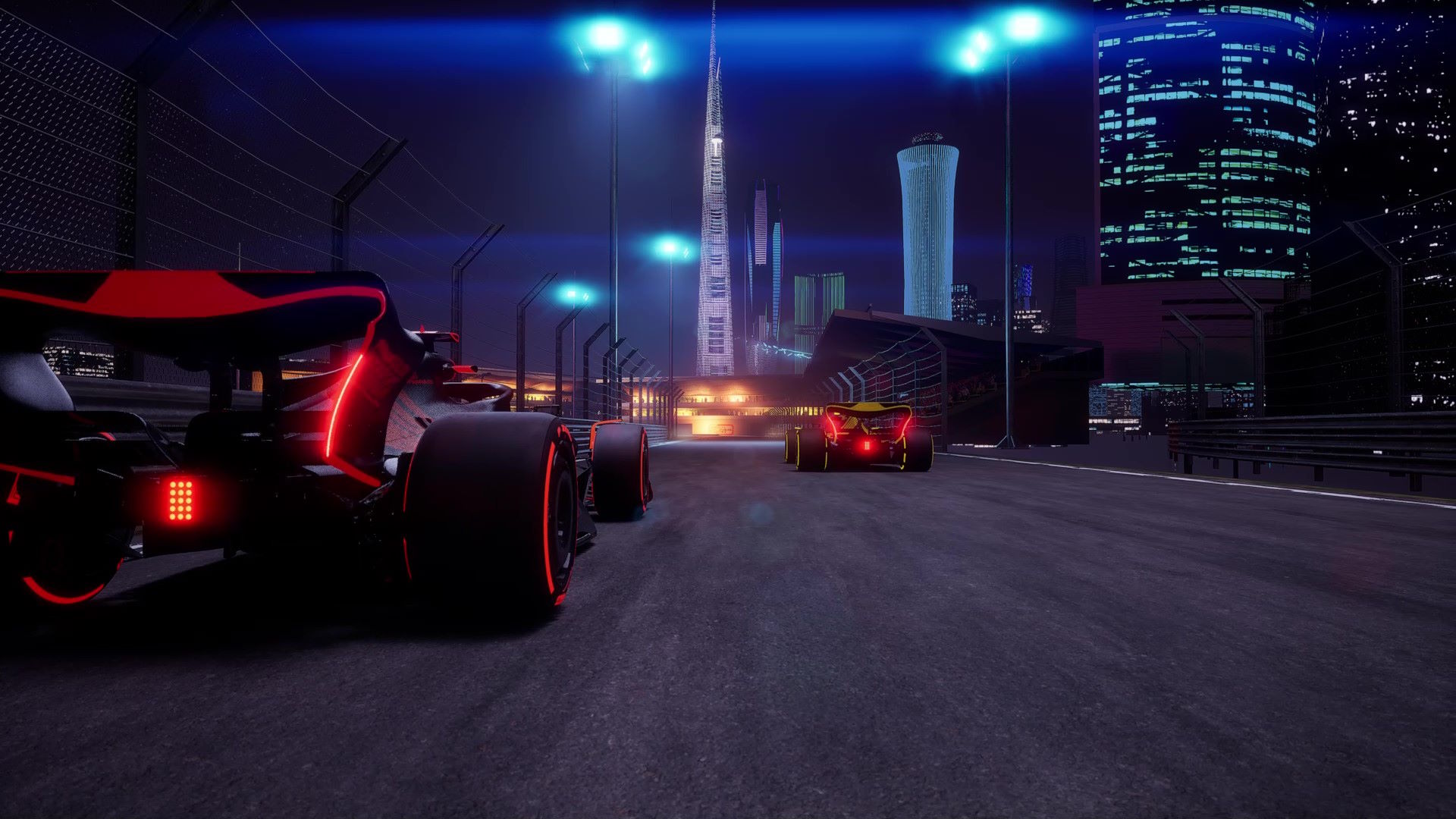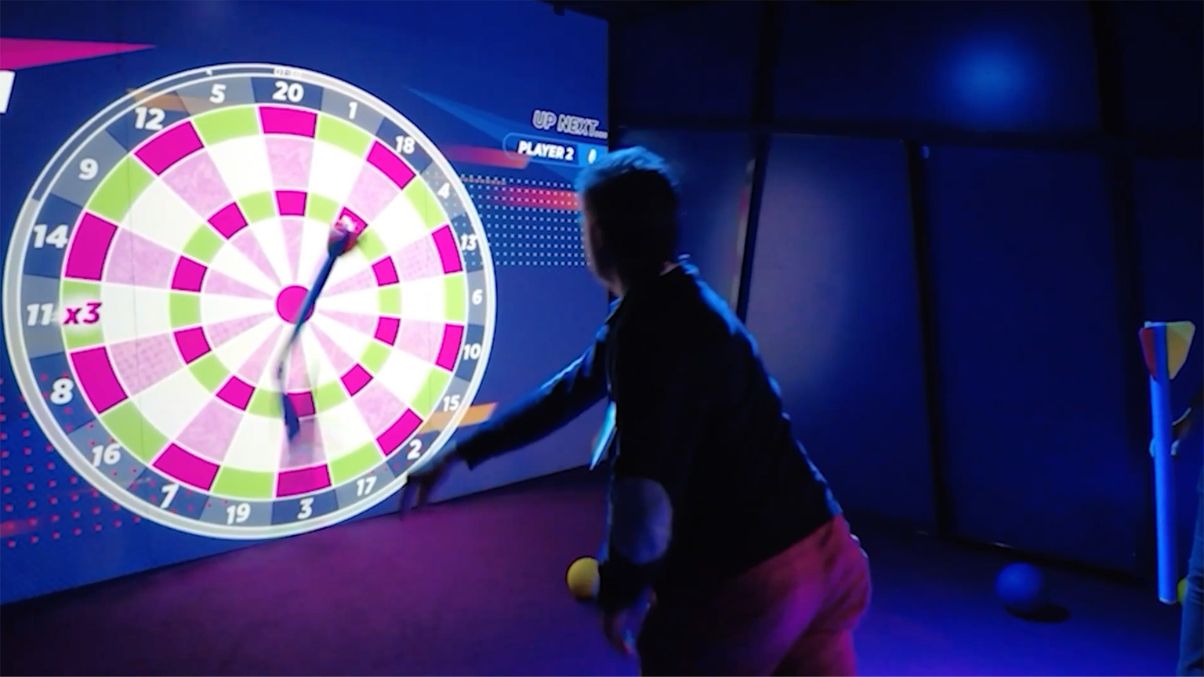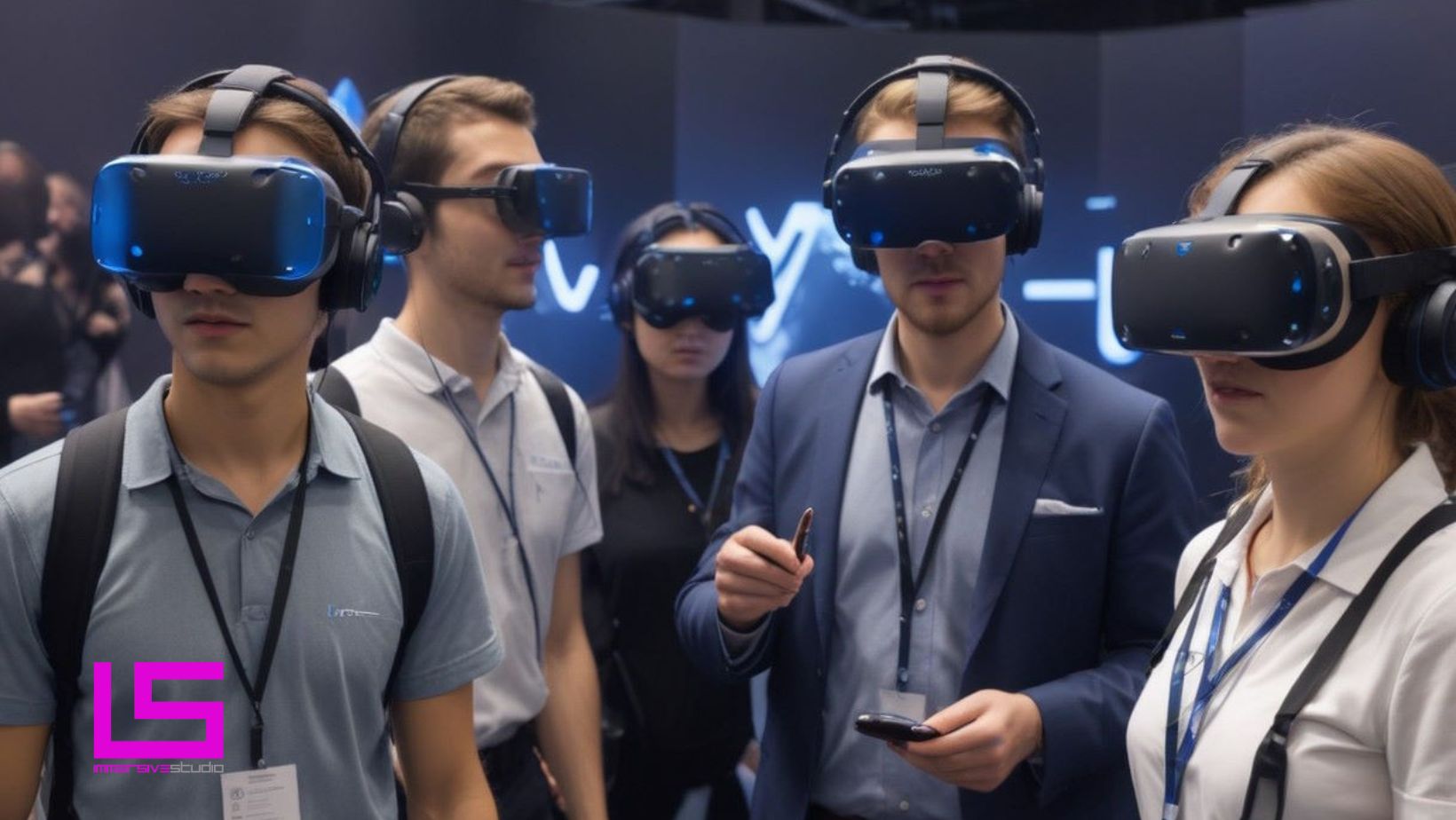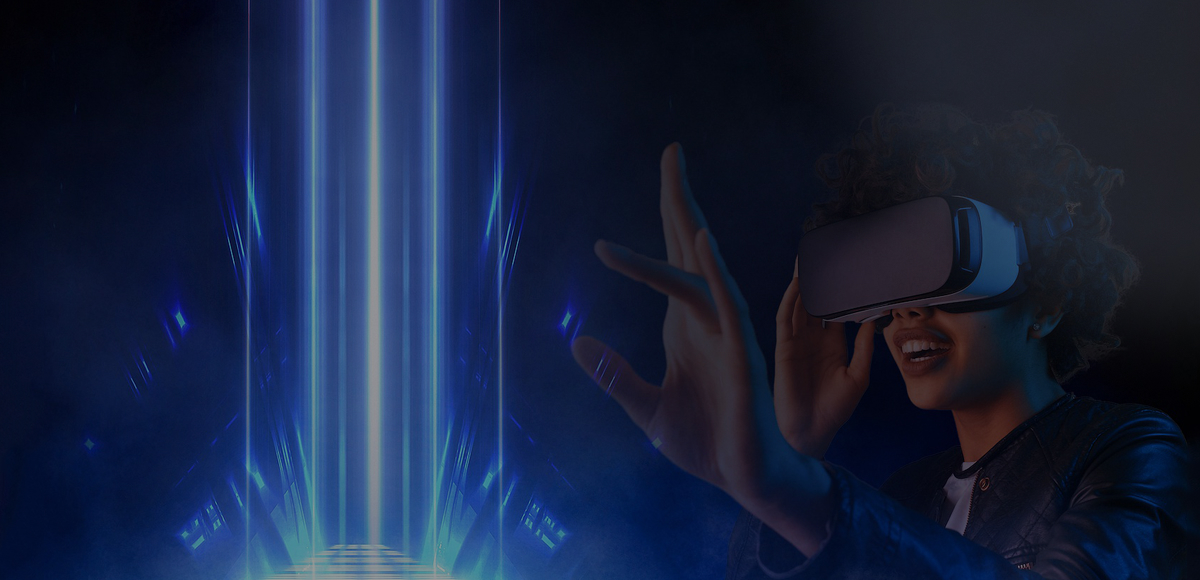
Unreal Engine 5 for VR Development – All You Need to Know
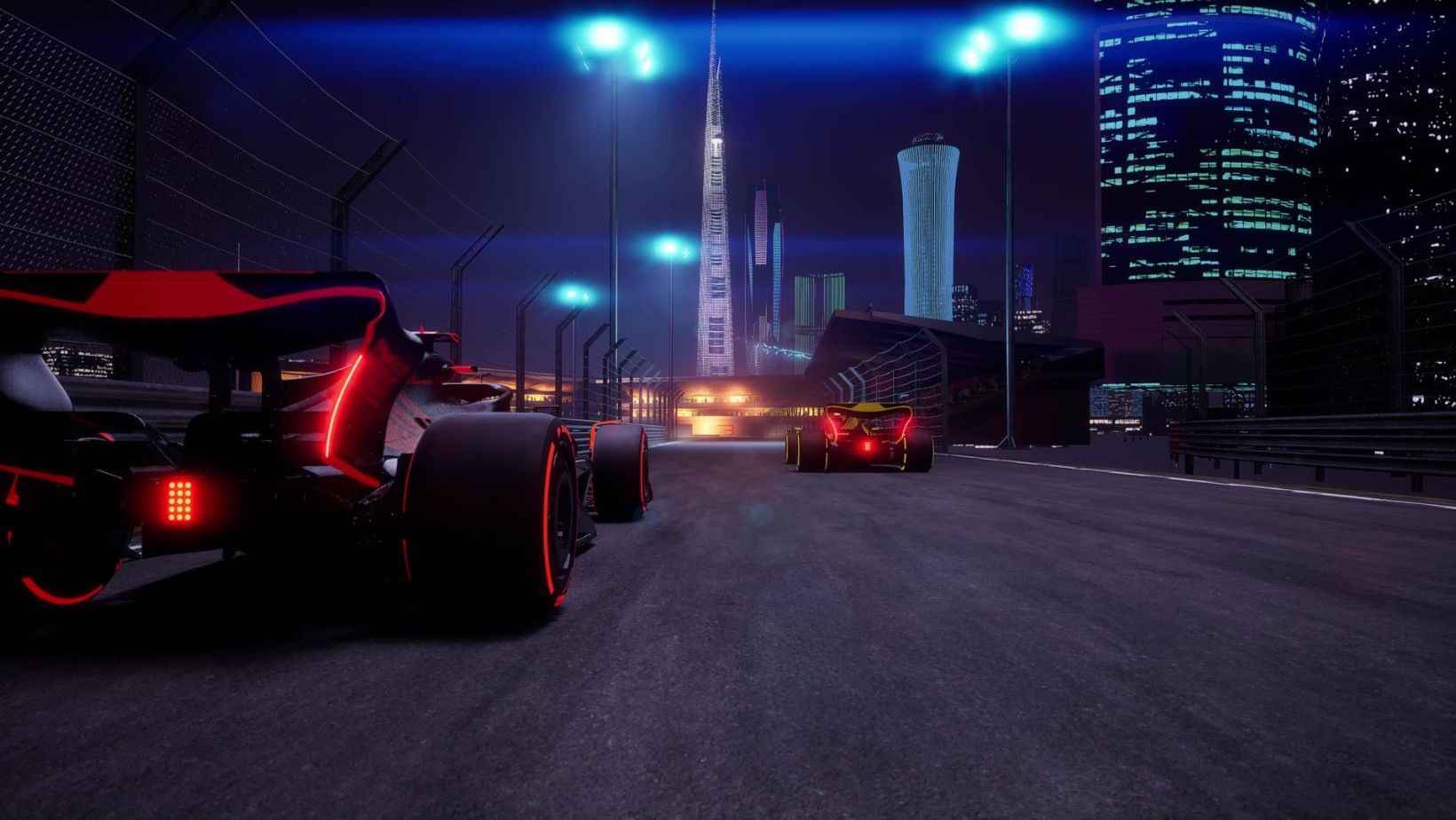
Welcome to the cutting-edge world of virtual reality development using Unreal Engine 5.4! Traditionally celebrated for its pivotal role in video game creation, Unreal Engine 5 (UE5) has now evolved into a versatile platform suitable for a much broader spectrum of creative applications. In this article, we will explore how UE5 can be harnessed to craft real time immersive virtual experiences not only for entertainment but also for corporate Projects.
With its robust graphical capabilities and powerful real-time performance, UE5 is revolutionizing how developers and 3D artists create realistic and innovative VR projects. Whether you are looking to create interactive virtual tours, engaging training simulations, or creating captivating promotional experiences through, Unreal Engine 5.4 offers the unique tools and flexibility needed to bring your vision to life in a real looking virtual space.
Keep reading as we delve deeper into why UE5 is a top choice for VR development, beyond its gaming roots, and how it can be utilized to create impactful VR experiences for a variety of headsets and user scenarios.
Why Unreal Engine 5 for VR?
Unreal Engine 5 is not merely a continuation of its predecessors; it stands out as a premier choice for developing virtual reality applications due to several key enhancements and features recently added to the software in its latest release. Here’s why it’s particularly suited for VR development, especially outside its traditional gaming roots:
Advanced Graphical Capabilities
Unreal Engine 5 introduces unprecedented visual fidelity through technologies like Nanite and Lumen. Nanite allows developers to create highly detailed environments without compromising performance, while Lumen offers dynamic global illumination that adapts in real time, enhancing the immersive quality of VR scenes. These features enable the creation of realistic and engaging virtual worlds that are crucial for both entertainment and corporate VR experiences that will actualy play without lag through a HMD. Previously trying to create such high fidelity 3d modlels inside VR resulted in poor realtime performance which rendered the presentations unstable and not user friendly, but with the advancements that were recenty released mens thatteh developers are now to get closer to reality whilst achieving a smooth playback.
Enhanced Performance and Scalability
The performance improvements in UE5 ensure smoother VR experiences, which are vital for user comfort and engagement. The engine optimizes VR applications to run efficiently on various hardware, minimizing latency and maximizing responsiveness, critical aspects in maintaining immersion in VR and meaning that the technical specifications of the hardware running the VR are withing reach of the average developer and not a luxury exclusive to the corporates (however please understand that a VR ready PC is still a very expensive piece of kit to buy when compared to an average user level PC) .
Comprehensive Toolset for Developers
Unreal Engine 5 comes equipped with an extensive array of development tools tailored specifically for VR. This includes full support for major VR headsets, integrated VR workflows within the Unreal Editor, and a robust set of APIs and plugins for extending functionality. Developers can leverage Blueprint visual scripting to rapidly prototype and iterate on VR experiences without deep programming knowledge, enabling a more accessible development process.
Real-Time Rendering and Simulation
UE5’s ability to handle real-time rendering and physics simulations plays a significant role in VR development. Real-time feedback is essential for creating interactive environments that respond intuitively to user actions, which is pivotal in VR settings where user interaction with the environment is constant and dynamic.
By utilizing Unreal Engine 5 for VR development, creators are equipped with a powerful tool that not only enhances the visual and interactive quality of their projects but also ensures a scalable and efficient workflow. This makes UE5 an excellent choice for developing a wide range of VR applications, from immersive training modules and architectural walkthroughs to virtual events and product demonstrations and for people who are looking for a higher quality visual aesthetic setting Unreal apart from some of its major competition like Unity for example.
Designing VR Experiences in Unreal Engine 5.4
Creating virtual reality experiences in Unreal Engine 5.4 combines artistic vision with technical expertise, utilizing UE5’s comprehensive tools and workflows specifically tailored for VR. Here’s a detailed look at how Unreal Engine can design engaging VR applications.
Tools and Workflows Specific to VR
Unreal Editor for VR:
- VR Mode: Unreal Engine allows developers to engage with their project in VR, offering a unique perspective by viewing and editing directly within the VR environment. This direct interaction can help fine-tune spatial arrangements and user interaction points.
Utilizing Unreal’s Blueprint Visual Scripting:
- Blueprints for VR: Blueprint visual scripting is particularly powerful in VR development, allowing for rapid prototyping of interactive elements without deep programming knowledge. Developers can use Blueprints to handle input from VR controllers, trigger events in the VR space, and manage user interactions dynamically.
VR-Specific Asset Creation:
- 3D Models and Environments: Designing VR-ready assets requires consideration of scale, detail, and performance. Unreal’s modeling tools and marketplace assets can be utilized to create and import high-quality models that are optimized for VR without necessarily having to build complete environments from scratch.
Performance Optimization in VR Settings
Optimizing performance is critical in VR to maintain immersion and prevent discomfort such as motion sickness and headaches. Here are key considerations:
- Frame Rate Stability: Aim for a consistent high frame rate, ideally at least 90 FPS for VR environments, to ensure smooth motion and responsiveness.
- Level of Detail (LOD) Settings: Adjust LOD settings to optimize rendering performance without noticeably reducing quality from the user’s perspective.
- Culling Techniques: Use frustum culling and occlusion culling to limit the rendering to only those objects that are visible to the user’s current viewpoint.
Implementing Interaction and Navigation
Interactivity is a cornerstone of VR, and UE5 provides several tools to create a responsive environment:
- Physics Interactions: Utilize Unreal’s physics engine to add realistic interactions with objects in the VR environment, enhancing the sense of presence and realism.
- Navigation Systems: Design intuitive navigation systems that can include teleportation, trackpad movement, or gesture-based controls, and even full free roaming, room scale movement depending on what best suits the application’s needs and user comfort.
Testing and Iteration
Regular testing within the VR environment is crucial:
- Playtesting: Conduct frequent playtesting sessions to gather feedback on usability and comfort. Adjust interactions and performance based on real user experiences.
- Iterative Design: VR development benefits from an iterative approach, gradually refining interactions and performance optimizations through continuous testing.
By integrating these tools and practices, developers can leverage Unreal Engine 5.4 to craft compelling and immersive VR experiences tailored not just to entertain but also to fulfill specific functional roles in corporate and educational settings. This approach ensures that VR applications are not only impressive visually but are also robust in their functionality and user interaction capabilities.
At Immersive studio we also provide the opportunity to try out your VR experience via our VR centers, where we have VR rigs setup ready for you to try your content out on.
Applications in Entertainment
Unreal Engine 5.4 (UE5) extends its capabilities far beyond gaming, offering revolutionary tools for creating virtual reality (VR) experiences in the entertainment industry. From immersive virtual concerts to utilizing Unreal engine into Virtual production stage to generate engaging movie scenes, UE5 enables creators to design experiences and use game technology to generate content that captivate and entertain audiences in entirely new ways. Here are some innovative applications of UE5 VR in the entertainment sector:
Virtual Concerts and Live Performances
Scenario: Creating a Virtual Music Festival
Imagine a virtual music festival where attendees from around the globe can gather in a digital space, designed to mimic a real-world festival environment. Using UE5, developers can create detailed, dynamic environments that react to the music, complete with real-time lighting effects and interactive elements. Fans can experience performances from their favorite artists as if they were there, interacting with other fans and the environment, enhancing the communal feel of live events.
Movie and TV Show Promotions
Scenario: Interactive Movie Trailers
For upcoming blockbuster films, studios can use UE5 to create interactive VR trailers or create Unreal realtime scenes which are played on specially constructed video walls. These can offer a narrative-driven exploration where users can step into the movie’s setting, interact with objects, and perhaps even influence events or uncover hidden story elements. This approach not only boosts engagement but also provides a novel way of storytelling that can generate buzz and anticipation ahead of a film’s release.
Themed Attractions and Experiential Marketing
Scenario: Brand-Themed VR Adventures
Imagine a soft drink company launching a new product with a VR experience set in a fantastical world inspired by the drink’s tropical flavors. Using UE5, marketers can create vibrant, interactive worlds where participants can go on quests, solve puzzles, and interact with the brand in a memorable way. This kind of experiential marketing can significantly enhance brand recall and customer engagement and is amazing when used at pop up events and expos.
Benefits of Using UE5 for Entertainment VR
- High Visual Fidelity: UE5’s advanced rendering capabilities ensure that virtual environments are not only immersive but also visually stunning, crucial for maintaining engagement in entertainment settings.
- Real-Time Effects: The ability to implement real-time effects, such as changes in lighting and weather within a VR scene, allows for dynamic experiences that can adapt to user interactions or follow a script, adding depth to the virtual experience.
- Scalability: UE5 supports projects of varying scales, from small indie experiences to large-scale productions, making it an adaptable tool for different types of entertainment projects.
By leveraging Unreal Engine 5 for VR development in the entertainment industry, creators can push the boundaries of traditional media and offer audiences unique, immersive experiences that deepen engagement and bring creative visions to life in spectacular ways. This innovative approach not only sets new standards in entertainment technology but also opens up endless possibilities for future applications.
Applications in Corporate Settings
Unreal Engine 5.4 (UE5) is not only a powerful tool for the entertainment sector but also offers significant advantages for various corporate applications. By utilizing UE5 for virtual reality (VR) development, businesses can enhance training, visualization, and collaboration, providing immersive and effective solutions across different industries. Here’s how UE5 can be employed in corporate environments:
Training Simulations
Scenario: Safety Training for Manufacturing
Consider a manufacturing company that wants to improve its safety training protocols. Using UE5, they can create a detailed virtual factory environment where employees can practice operating heavy machinery in VR. This allows for realistic, hands-on training without the risks associated with real-world training. The VR simulation can include emergency scenarios, requiring employees to respond to incidents like equipment malfunctions or safety breaches, thereby improving their skills in a controlled, measurable way.
Virtual Tours and Architectural Visualization
Scenario: Real Estate Virtual Showings
Real estate agencies can use UE5 to offer virtual tours of properties. These VR experiences allow potential buyers to explore properties remotely, moving through each room and interacting with the environment—such as opening cabinets and switching lights on and off, changing materials. This not only saves time for both realtors and clients but also opens up the market to international buyers who can virtually visit properties from anywhere in the world.
Scenario: Architectural Pre-visualization
Architects and developers can use UE5 to create detailed pre-visualizations of their projects, allowing clients to walk through a building before construction begins. This can be invaluable for making design decisions and for marketing purposes, as it provides a realistic representation of the finished project, helping to secure approvals and investments.
Collaborative Environments and Remote Work
Scenario: Virtual Collaboration Spaces
In the context of increasing remote work, a company could use UE5 to create a virtual office environment where employees can meet and collaborate as if they were in a physical office. This VR space can be designed to facilitate interactions that feel natural and intuitive, such as virtual whiteboards for brainstorming sessions and private rooms for confidential meetings.
Benefits of Using UE5 for Corporate VR
- Enhanced Engagement and Retention: VR training and presentations can increase engagement and information retention compared to traditional methods.
- Scalability and Flexibility: UE5 supports scalable project development, allowing companies of any size to create tailored VR solutions that fit their specific needs.
- Cost-Effectiveness: Virtual simulations and tours can reduce the costs associated with physical prototypes, travel, and training facilities.
By integrating Unreal Engine 5.4 into their VR strategies, corporations can leverage cutting-edge technology to solve traditional business challenges, improve operational efficiency, and offer innovative services to their clients and employees in cost effective and safer ways. This approach not only streamlines various business processes but also enhances the overall corporate experience, paving the way for more technologically integrated business practices.
Best Practices and Tips
Using Unreal Engine 5.4 (UE5) for VR development in both entertainment and corporate contexts demands a keen understanding of best practices and tips that can enhance the end-user experience. Here are essential guidelines to ensure your VR projects are not only technically proficient but also user-friendly and impactful.
Effective Use of Spatial Audio
- Immersive Soundscapes: Incorporate spatial audio to create realistic soundscapes that change dynamically with the user’s movement and orientation in the VR environment. This enhances the sense of presence and immersion, crucial for both engaging entertainment applications and effective training simulations.
- Audio Cues: Use audio cues strategically to guide users through VR experiences, whether to direct them to important interactive elements or to alert them to in-game narrative developments or training scenarios.
Balancing High-Quality Graphics with Performance
- Graphical Fidelity vs. Performance: Striking the right balance between high-quality graphics and optimal performance is key. High-resolution textures and complex shaders can enhance realism but may also lead to reduced frame rates, which are critical in VR.
- Optimization Techniques: Employ techniques like level-of-detail (LOD) scaling, efficient texture compression, and mesh simplification. These methods help maintain visual quality while ensuring smooth performance across various VR hardware.
User Experience Design for VR: Comfort and Interactivity
- User Comfort: Design VR experiences with user comfort in mind to reduce the risk of motion sickness and fatigue. This includes considering the duration of sessions, movement mechanics (like teleportation versus free walking), and user interface design that minimizes strain.
- Interactivity: Enhance user engagement through intuitive and meaningful interaction. Ensure that the VR interface is accessible and provides feedback that affirms user actions, whether they’re manipulating objects in a training module or navigating a virtual environment.
Accessibility Considerations
- Inclusive Design: Make VR experiences accessible to a wider audience by including options for different levels of mobility and sensory abilities. Options such as subtitles, alternative control schemes, and adjustable settings for visual and auditory elements are essential.
Continuous Testing and Feedback
- Iterative Design Process: VR development benefits significantly from an iterative design process. Regular testing phases with real users provide invaluable feedback that can be used to refine and improve the experience.
- Analytics and User Data: Implement analytics to gather data on how users interact with your VR application. This data can highlight areas for improvement and help tailor the experience to better meet user needs.
By following these best practices, developers can leverage the powerful capabilities of Unreal Engine 5.4 to create VR experiences that are not only technically impressive but also enjoyable, effective, and accessible to a broad audience.
Future of VR Development with Unreal Engine 5
The landscape of virtual reality (VR) development is rapidly evolving, and Unreal Engine 5.4 (UE5) is at the forefront of this transformation. As we look toward the future, several trends and advancements are likely to shape how VR is developed and implemented across various sectors. Understanding these future directions will help developers and businesses prepare and innovate for what’s coming next in VR technology.
Anticipated Updates and Features in Upcoming Versions
- Continued Advancements in Graphics and Performance: Epic Games, the developer behind Unreal Engine, consistently focuses on enhancing the graphical capabilities and performance optimization of their software. Future updates are expected to further improve real-time rendering technologies, making VR experiences even more immersive and visually stunning.
- Enhanced AI and Machine Learning Integration: Upcoming versions of UE5 are likely to integrate more advanced AI and machine learning features, which could revolutionize how interactive elements are programmed in VR. This might include smarter NPC behaviors, more dynamic environmental responses, and personalized user experiences based on real-time data analysis.
- Advancements in Head-Mounted Display (HMD) Technology: Improvements in HMD ‘head-mounted display’ technology will see the devices getting smaller as the processors that are required to run them decrease in size, and the combination of motion platforms and rolling road technology which will allow the user to travel within a small footprint but cover large distances to match the real-world scale of the content they are experiencing inside the headsets.
Expanding the Scope of VR Applications
- Beyond Gaming and Entertainment: While VR has traditionally been associated with gaming, its applications are expanding into more diverse fields such as healthcare, education, and professional training. Unreal Engine 5.4 is set to play a pivotal role in this expansion, providing the tools necessary to create detailed simulations and training environments that can lead to improved outcomes in these sectors.
- Increased Use in Remote Collaboration and Telepresence: As remote work becomes more common, VR technologies developed with UE5 could become essential tools for virtual meetings and collaborations, offering more engaging and interactive alternatives to traditional video conferencing.
Innovation in VR Content Creation
- Procedural Content Generation: Leveraging UE5’s capabilities for procedural generation can enable the creation of vast, dynamic worlds with less manual input, making VR environments more expansive and varied.
- Advanced User Interaction Models: Future developments may introduce more sophisticated models for user interaction in VR, such as using gesture recognition and eye tracking to create more natural and intuitive user interfaces.
Conclusion
The future of VR development with Unreal Engine 5.4 promises a blend of technological innovation, expanded application areas, and enhanced user experiences. As UE5 continues to evolve, it will not only redefine the boundaries of what is possible in virtual environments but also how we interact with and perceive digital worlds.
For developers and businesses, staying abreast of these advancements is essential to harnessing the full potential of VR as it finally starts to come of age to transform their operations and offerings. Let Immersive Studio be your partner in harnessing the full potential of UE5 and VR for your projects. Take the first step now and contact us to tell us about your VR idea. You can also drop us a message on Facebook, LinkedIn, or Instagram.
